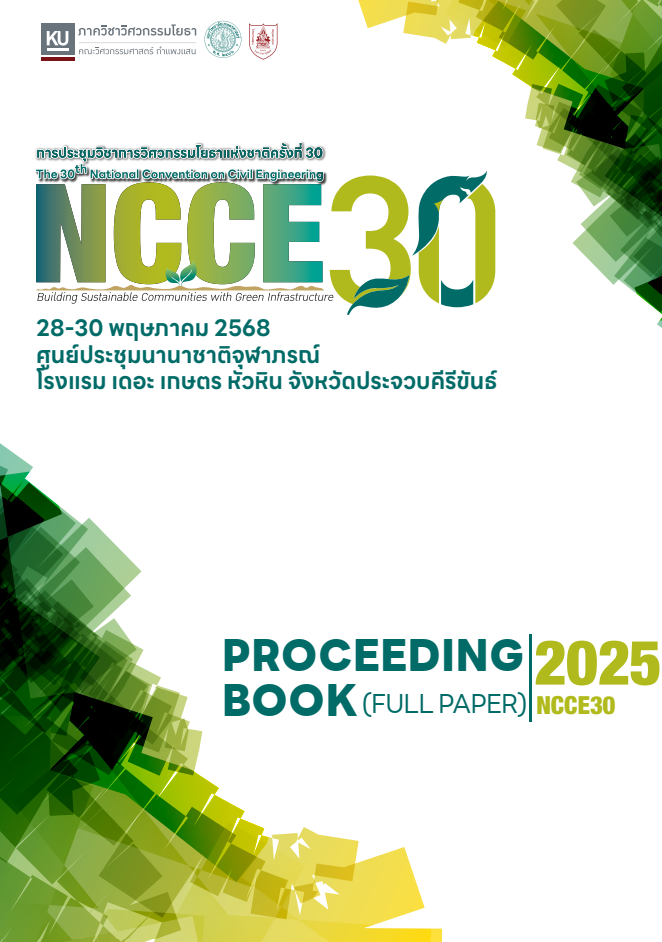Enhancing the Mechanical Properties of Alkali-Activated Mortar with Graphene Quantum Dots
คำสำคัญ:
Alkali-activated material, Carbon emission, Environmental impact, Fly ash, GQDsบทคัดย่อ
Graphene quantum dots (GQDs) are nanoscale carbon particles with exceptional properties, making them highly suitable for a wide range of applications. In this study, GQDs were incorporated into alkali-activated mortar (AAM) to enhance their workability and mechanical performance. The GQDs were added at dosages of 0.3%, 0.6%, 0.9%, and 1.2% by weight of fly ash. The study investigates the impact of GQDs on key properties of AAM, including compressive strength, flexural strength, porosity, environmental impact, and eco-strength efficiency. The results showed that the addition of 0.3% GQDs significantly improved mechanical strength, with a 39.1% increase in compressive strength compared to the control mixture without GQDs. The flexural strength increased by 38.8% compared to the control mix, while the porosity decreased by 4%. However, when the GQD content exceeded 0.3%, a reductions in both compressive strength and flexural strength was observed. Environmental impact analysis revealed that higher GQD content led to a reduction in carbon emissions. Additionally, the eco-strength efficiency assessment demonstrated that the mix containing 0.3% GQDs achieved the highest eco-strength efficiency among all tested mixes. This finding underscores the potential of GQD-enhanced AAM for practical, sustainable applications.
ดาวน์โหลด
เผยแพร่แล้ว
วิธีการอ้างอิง
ฉบับ
บท
การอนุญาต
ลิขสิทธิ์ (c) 2025 Engineering Institute of Thailand

This work is licensed under a Creative Commons Attribution-NonCommercial-NoDerivatives 4.0 International License.
บทความที่ได้รับคัดเลือกนำเสนอในการประชุม NCCE ถือเป็นลิขสิทธิ์ของวิศวกรรมสถานแห่งประเทศไทย ในพระบรมราชูปถัมภ์ (วสท.) (Engineering Institute of Thailand)


